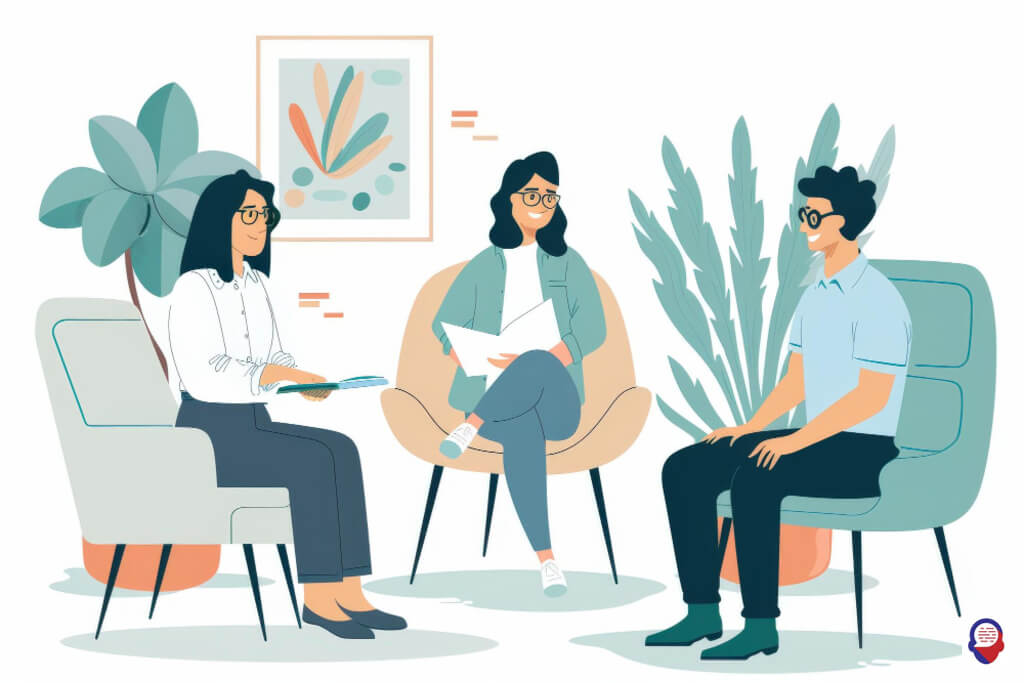The Ultimate Guide to Person-Centred Counselling
Have you ever felt like you hold the answers to your own problems, but you just can’t seem to find them? It’s a common human experience. We navigate the maze of our own minds, feeling the shape of a solution, yet unable to grasp it. This is the very space where a unique and powerful form of therapy thrives, a therapy built on a radical idea: you are the ultimate expert on you. It’s an approach that trusts your inner wisdom, honours your unique journey, and provides the conditions for your own growth to flourish, not by giving you answers, but by helping you uncover the ones you already possess.

What is the Client-Centred Theory of Counselling?
Client-centred theory, also known as person-centred therapy, is a humanistic approach to counselling that places the client at the very heart of the therapeutic process. It operates on the fundamental belief that every individual has an innate capacity for personal growth and healing, and the therapist’s role is to facilitate this natural process by providing a relationship built on specific core conditions.
Developed by the pioneering psychologist Carl Rogers, this method marked a significant shift away from traditional models where the therapist was the expert who would diagnose and treat the patient. Instead, Rogers proposed a more collaborative, equal relationship. The therapist doesn’t direct, advise, or interpret in the way other therapies might. Their focus is on creating a climate of safety, acceptance, and understanding, a psychological environment so nourishing that the client feels free to explore their deepest thoughts and feelings without fear of judgment. It is in this space of profound acceptance that the client begins to better understand themselves, trust their own experiences, and move towards a more authentic and fulfilling way of being.

Who was Carl Rogers and Why is He Important?
Carl Rogers was a highly influential American psychologist and one of the founders of the humanistic movement in psychology. His work is so important because he fundamentally changed the landscape of therapy, shifting the power dynamic from the therapist to the person seeking help, whom he was the first to call a "client" rather than a "patient."
Rogers believed passionately in the inherent goodness and potential of human beings. He introduced a concept he called the "actualising tendency," the idea that within every living organism, including every person, there is a built-in motivation to develop, grow, and enhance oneself. He saw this as a natural force, like a seed pushing its way through the soil towards the sun. However, he recognised that this growth could be stunted or distorted by life experiences, particularly by judgment and a lack of acceptance from others. His entire therapeutic model was designed to remove these blockages, to provide the psychological equivalent of sunlight and good soil, allowing the client’s natural tendency towards growth to resume its course. His work championed empathy and authenticity, concepts that have since become cornerstones of effective therapy across many different modalities.

What are the Core Principles of this Approach?
The entire structure of person-centred therapy rests upon three core principles, often called the "core conditions." These are not techniques to be deployed, but rather attitudes or ways of being that the therapist must embody within the therapeutic relationship. Rogers hypothesised that when a client experiences these three conditions from their therapist, positive and constructive personal change is inevitable. These conditions are Unconditional Positive Regard, Empathic Understanding, and Congruence. Together, they form a powerful triad that fosters trust, safety, and profound self-exploration.

What is Unconditional Positive Regard?
Unconditional positive regard is the therapist’s complete and genuine acceptance of the client as they are. This means valuing the client as a person of worth, without judgment, criticism, or approval, regardless of their feelings, behaviours, or past experiences.
Imagine being able to say anything, to confess your deepest fears, your most shameful secrets, or your most confusing thoughts, and be met not with shock or disapproval, but with unwavering acceptance. This is the essence of unconditional positive regard. It doesn’t mean the therapist condones all behaviours, such as harmful actions, but it does mean they accept the feelings and humanity behind them. This profound acceptance creates a sanctuary from the judgments of the outside world.
Many of us grow up internalising what Rogers called "conditions of worth." We learn that we are loved or valued only when we behave in certain ways, think certain thoughts, or achieve certain things. This forces us to hide or deny parts of ourselves, creating a painful gap between who we really are and who we think we should be. Unconditional positive regard directly counters this. It sends a powerful message: "You are worthy and valued, just as you are." This allows the client to slowly dismantle those old conditions of worth and begin to accept themselves, wholly and completely.

What is Empathic Understanding?
Empathic understanding is the therapist’s ability to accurately and sensitively perceive the client’s inner world of thoughts and feelings as if it were their own, but without ever losing the "as if" quality. It is the art of seeing the world through the client’s eyes and feeling it from their perspective.
This is far deeper than simple sympathy, which is feeling for someone. Empathy is feeling with them. The person-centred therapist listens intently, not just to the words being said, but to the emotions, the meanings, and the experiences behind them. They then communicate this deep understanding back to the client, often by reflecting or rephrasing what they’ve heard. For instance, they might say, "It sounds like you’re feeling incredibly hurt and betrayed by that, and also a little angry at yourself for not seeing it coming."
When a client feels truly and deeply understood, something remarkable happens. For perhaps the first time, they feel truly seen. This validation of their experience is incredibly powerful. It reduces feelings of isolation and confusion, helping the client to make sense of their own emotional landscape. As the therapist holds up this clear, non-judgmental mirror, the client can begin to see themselves more clearly, understand their feelings more deeply, and develop a greater sense of trust in their own perceptions and experiences.

What is Congruence or Genuineness?
Congruence means that the therapist is real, authentic, and transparent within the therapeutic relationship. The therapist is not playing a role or hiding behind a professional mask; their inner feelings and their outward expression are consistent and aligned.
This is perhaps the most challenging of the three conditions. It requires the therapist to be genuinely themselves in the session. If they are feeling confused by what the client has said, they might express that confusion in a gentle way. If they are moved by the client’s story, they allow that warmth to be present. This doesn’t mean the therapist burdens the client with their own problems, far from it. The focus always remains on the client. But it does mean the relationship is a real human-to-human connection, not a detached, clinical interaction.
The therapist’s genuineness is vital for building trust. We can all sense when someone is being inauthentic, and it immediately puts us on guard. When a client experiences the therapist as a real and transparent person, it makes the therapeutic space feel safer and more reliable. Furthermore, the therapist’s congruence serves as a model. By being in a relationship with someone who is authentic and self-aware, the client can learn to become more comfortable with their own authentic self, paving the way for greater self-acceptance and a more integrated personality.

How Does a Person-Centred Counselling Session Actually Work?
A person-centred counselling session is a non-directive and client-led conversation, where the client is free to explore whatever is on their mind. There is no set agenda, no worksheets, and no pre-planned exercises, the client decides the direction and pace of each and every session.
The session begins with the client bringing whatever issue feels most pressing to them on that particular day. It could be a current crisis, a lingering memory, a confusing feeling, or a difficult relationship. The client is in the driver’s seat. They can talk about whatever they want, for as long as they want, and can fall silent when they need to. The therapist’s role is not to steer the conversation or solve the problem. Instead, their role is to be fully present with the client, listening with focused attention.
Throughout the session, the therapist uses the core conditions as their guide. They listen with empathy, reflecting back the client’s feelings and meanings to ensure they understand correctly. They offer unconditional acceptance, creating a safe harbour for even the most difficult emotions. And they remain genuine and present, a steady companion on the client’s journey of exploration. The power of the session lies not in what the therapist does, but in the quality of the relationship they create. It is this unique, supportive relationship that empowers the client to untangle their own thoughts, connect with their own feelings, and ultimately discover their own path forward.

What is the Goal of Client-Centred Therapy?
The primary goal of client-centred therapy is to facilitate the client’s journey toward becoming a more self-aware, self-accepting, and "fully functioning person." The aim is not simply to resolve a specific problem, but to foster a deeper process of personal growth that equips the client to better handle future challenges.
A key concept here is the movement from "incongruence" to "congruence" within the client. Incongruence is a state of inner conflict that arises when there is a mismatch between our actual experience (our "real self") and our self-concept (our "ideal self," often shaped by the expectations of others). This gap can cause tension, anxiety, and a feeling of being inauthentic. The therapeutic process helps to close this gap. As the client feels unconditionally accepted by the therapist, they begin to accept themselves. They can start to let go of the "shoulds" and "oughts" and pay more attention to their true feelings and desires.
The ultimate aim is to help the client become what Rogers termed a "fully functioning person." This isn’t a destination but a way of being. A fully functioning person is more open to experience, less defensive, more able to live fully in the present moment, and has a greater trust in their own organismic wisdom. They trust their gut feelings and make choices that are authentic to them. In essence, the goal of the therapy is to help you become more fully and authentically you.

Who Can Benefit from This Type of Counselling?
This deeply humanistic approach can be beneficial for a very wide range of individuals facing a variety of life’s challenges. It is particularly effective for those dealing with issues rooted in self-worth, identity, and emotional awareness, such as anxiety, depression, grief, stress, relationship difficulties, and low self-esteem.
Because the therapy is centred on self-exploration and personal growth, it is an excellent choice for anyone who feels a bit lost, disconnected from themselves, or is seeking a deeper understanding of who they are and what they want out of life. It provides a space to explore life transitions, existential questions, and the desire for a more authentic existence. The focus on building a strong, trusting therapeutic relationship makes it a powerful foundation for healing from past hurts and building self-confidence.
While its applications are broad, it’s also important to recognise its nature. For individuals seeking a very structured, skills-based approach for a highly specific issue, like a severe phobia or OCD, other therapies like CBT might be recommended, often in conjunction with person-centred principles. However, for the vast majority of people seeking to understand themselves better and navigate emotional pain, the client-centred approach offers a profoundly respectful and empowering path to healing.

What Makes Client-Centred Therapy Different from Other Therapies?
The most fundamental difference is its non-directive stance, which is rooted in the belief that the client possesses the innate ability to heal themselves. Unlike other therapeutic models, the person-centred therapist intentionally refrains from giving advice, offering interpretations, or setting the agenda for the session.
Let’s compare it to Cognitive Behavioural Therapy (CBT). CBT is a highly structured and goal-oriented approach. A CBT therapist works with the client to identify and challenge specific negative thought patterns and behaviours, often providing homework and teaching practical coping strategies. The therapist is more of a teacher or a coach. In contrast, a person-centred therapist is a facilitator or a companion, trusting that the client will find their own strategies once they achieve greater self-understanding in a supportive environment.
Now, let’s look at psychodynamic therapy. Psychodynamic approaches often focus on exploring how past experiences and unconscious drives influence present behaviour. The therapist may take on an interpretive role, helping the client understand defence mechanisms or patterns stemming from childhood. While person-centred therapy acknowledges the past, its primary focus is on the client’s immediate, subjective experience, the "here and now." The therapist’s goal isn’t to interpret the client’s experience for them, but to understand it from the client’s own point of view. It is this unwavering trust in the client’s inner resources that truly sets it apart.
Frequently Asked Questions

How long does person-centred therapy take? The duration of person-centred therapy is entirely led by the client and varies greatly from person to person. Because the approach is non-directive, there is no fixed timeline or number of sessions. Some clients may find that a few sessions are enough to gain the clarity they need for a specific issue, while others may choose to engage in long-term therapy for deeper, ongoing personal growth and self-exploration.

Will the therapist just sit there and say nothing? No, this is a common misconception. While the therapist will not direct the conversation or offer advice, they are far from passive. A person-centred therapist is engaged in a process of intense, active listening. They are working hard to understand your world, and they will communicate that understanding by reflecting your feelings, clarifying your thoughts, and asking questions that gently encourage deeper exploration, all to help you hear yourself more clearly.

Is this therapy effective? Yes, extensive research has demonstrated the effectiveness of the person-centred approach for a wide range of psychological issues. More importantly, decades of research across all forms of therapy have shown that the quality of the therapeutic relationship, the bond between therapist and client, is one of the single most significant predictors of a positive outcome. The core conditions of person-centred therapy are specifically designed to build exactly this kind of strong, trusting, and effective relationship.

Can it help with serious mental health conditions? Person-centred therapy can be a vital component in the treatment of many serious mental health conditions. Its principles of creating safety, trust, and acceptance provide a crucial foundation for any healing journey. For some conditions, it may be used in an integrative way, alongside other treatments like medication or more structured therapies, to ensure the individual receives comprehensive and holistic support that honours them as a person first and foremost.
At Counselling-uk, we believe that you are the expert on your own life. We know that within you lies the strength and wisdom to navigate the challenges you face. Our mission is to provide a safe, confidential, and professional space where you can be truly heard, accepted without judgment, and supported as you connect with your own inner resources. If you are ready to begin a journey of self-discovery and healing, we are here to walk alongside you. Reach out today to connect with a counsellor who is ready to listen.


